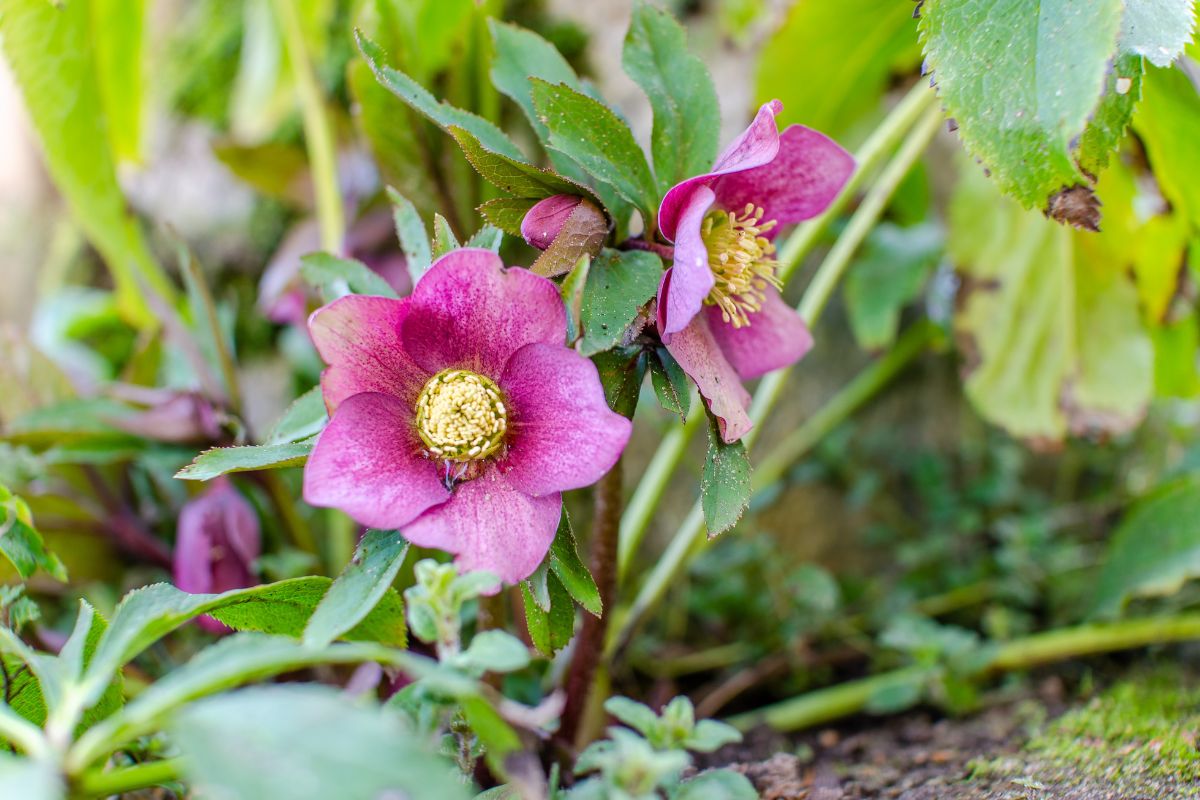Hellebores have a large window for when you can plant them. However, there are a few things that you will want to avoid if you plan on planting them in the winter or summer months. Let’s take a closer look at some examples of when you should, and shouldn’t plant hellebore.
Table of Contents
When is the Best Time to Plant Hellebores?
The ideal time to plant hellebores is in the fall or late spring. Planting them in the fall gives them insulation through the winter. If you plant them in the spring or the summer months, make sure to give them a good amount of water.
Every plant can benefit by being planted at the optimal time of the year. This is something that many people forget.
You can plant perennial flowers, like hellebores, in many different parts of the year, however, planting them in the fall is the most optimal time for planting in my experience.
Why You Should Plant in Fall
Planting in the early fall will give your hellebore some time to take to its new underground stage of development. It will be able to sort of hibernate through the winter months, and then emerge in the springtime.
For seeds to sprout in the spring, they must have those few warmer months before the freeze to germinate. If you do not plant them soon enough, they may not sprout until the next year.
The seeds start to grow and appear on pods where the spent flowers were, in spring and summer. You could plant them in the summer, but some people suggest planting them the following spring.
When considering an area for planting, make sure that there is some shade. These plants need a good balance of shade and sun. Source.
See our article for Hellebore Sun or Shade here.
Can You Plant Hellebores in Summer?
Yes, you can plant hellebores in the summer. The seeds need to germinate through a few warm months, and then hibernate through the winter. Some people prefer to plant the seeds in late summer instead of fall because this mimics the plant’s natural seed propagation.
The seeds fall off during the summer and seedlings start to grow at the base of the plant. These seedlings can also be planted in the spring. This is how nature does its seed propagation for the hellebores, so waiting until the next year may not provide the same quality and number of flowers.
Can Hellebores be Planted in Winter?
Hellebores are plants that thrive in the winter. So yes, they can be planted in the winter. When planting them in the winter months there are a few things you will want to keep in mind.
The first thing to consider is not to wait until the ground is frozen. The hellebores need some “warm time” underground for the plants to germinate, just before a long cold period. Also, the ground can be very hard to dig in when it is frozen, so start a little early if you can.
If you must start during the winter months when it is extra cold, fear not, you shouldn’t have too much of a problem. The ground should do a good job as long as the soil allows for proper draining and consistency. So, you may need to break the ground up a bit if it is frozen.
When to Plant Hellebores Divisions
Divisions are best planted just before the winter months. If you can, plant your hellebore division in September or October. This will allow them to take to the ground, while there is still some warmth.
The same goes for transplanting. If you have to move a hellebore plant, try to do so in the fall months, before the really cold weather arrives. This will give it an equal chance to have time to germinate and become ready for the winter.
When to Plant Hellebores Seeds
Hellebores seeds grow mostly in springtime and early summer. They grow inside little pods that come through just after the flowers are spent. You can collect the seeds from the pods and plant them.
So when is the best time for that? We suggest either planting the seeds in the springtime and during fall (the best time to plant is March through August) or you can wait until the next year.
The seeds will need around 60 days of moist time through the fall and winter months. Be prepared to water them enough to keep them wet during this time.
You also have the option of planting them just after the pod’s drop or let them self-sew. If you do this quick enough they will skip the dormant stage.
However, if you let them stay out of the soil for too long the outside coating of the seed will get hard and they will go into the dormant stage. If you have stored your seeds, they will be dormant and will need stratification. Source.
Do Hellebores Bloom the First Year?
When transplanting or planting divisions of hellebore, it will take 2-3 years for the plants to start flowering. Many people get discouraged with these types of plants, thinking that they are not going to bloom, or that they have done something to stunt them. Sometimes it just takes more time.
The same goes for hellebore seeds that are planted. They will take 2 or more years to produce flowers. It is important to keep the plants wet in the early stages. Even when it is cold, the soil should remain moist.
When to Plant Hellebores by Zone (3 – 9)
Hellebores grow best Plant Hardiness Zones 3 through 9. When planting you should consider a few things. First, make sure that they can grow in your Hardiness Zone. While you may still be successful in other zones it could save you some time and aggravation by planting them in a compatible hardiness zone.
| Zone 3 | Between March and August |
| Zone 4 | Between March and August |
| Zone 5 | Between March and August |
| Zone 6 | Between March and August |
| Zone 7 | Between March and August |
| Zone 8 | Between March and August |
| Zone 9 | Between March and August |
Related Questions
Is it too late to plant hellebores?
The ideal time to plant hellebore seeds is just after the pod drops. If the seeds are outside of the ground for too long they will turn dormant. You can also plant them in the fall, just before the winter.
Can you transplant hellebores?
Yes, you can transplant, or move your hellebores. The best time to do this is around September and October. You can also plant divisions during this time.

